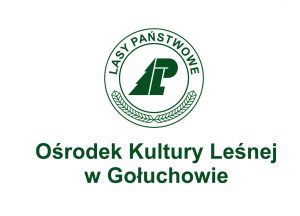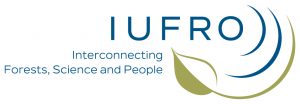International Conference on December 9-10, 2021
“Natural and cultural heritage in forests – contemporary challenges”
HONORARY PATRONAGE
Prof. Ph.D., D. Sc. Michał Zasada – His Magnificence Rector of Warsaw University of Life Science
Józef Kubica – General Director of the State Forests
Helena Vičič – Managing Director, The European Association for Heritage Interpretation
IMPORTANT DATES – EXTENDED DEADLINE!
by August 31 by September 12 →application Registration closed
by September 15 by September 26 – qualification of abstracts
by September 30 – Authors notification
Links to MS Teams meetings
9.12 – First day of the Conference – click here
10.12 – Second day of the Conference – click here
About the conference
About the conference
The conference is designed for researchers and practitioners who want to present their work, enhance their knowledge of natural and cultural heritage issues in forests, and for heritage resource managers.
What are the subtitles?
- Natural and cultural heritage in forests – identification and interpretation
- Forest management in UNESCO World Heritage sites
- Cultural dimension of forest use
- Conservation of natural heritage
- Natural and cultural heritage in forest – tourism and recreation developmentji.
What is the target group
Scientists from various scientific centres, universities and research institutes, foresters, natural scientists, conservators of nature and monuments, employees of national parks, landscape parks and urban forests, responsible for management of natural and cultural heritage in forests.
How to participate?
Step 1. Abstract submission
We invite you to submit abstracts by August 31, 2021.
Registration formStep 2. Qualification of abstracts
All submitted abstracts will be qualified by the Scientific Committee between September 1-15.Step 3. Confirmation
By September 30, Authors will be notified by e-mail about accepting abstracts and assigning them to a specific session, as well as about the form of presentation of their work (paper or poster).
People who did not submit an abstract or their abstract was rejected, can also participate in the conference as listeners.
Conference fee
Participation fee: free
Technical information
The conference will be held virtually. We are currently in the reorganization process. Further information will be published soon.
The language of the conference is English.
Guidelines for the presentation
Sessions will take place one after another, we do not foresee parallel sessions. Presentation and discussion will take place via the Youtube platform. We anticipate 15-minute oral presentations followed by a 5-minute discussion.. Authors delivering papers will be asked to prepare a Power Point presentation and send it to the conference organisers by 15 November 2021. We anticipate a poster session on the second day of the conference. Poster authors will be asked to send a short 3-minute video-poster (PowerPoint presentation + voice commentary) by November 15, 2021.
Poster (with min. resolution 1080 x 1920 pix; aspect ratio 9:16). We anticipate a half-hour discussion after the poster session.
Guidelines for the authors of abstracts
Title
A maximum of 25 words is allowed.
List of authors and affiliations
Full names, surnames and affiliations of the authors should be provided.
The presentation makes one author.
Abstract
The abstract should contain between 150 and 250 words. Tables, graphics, photos etc. are not allowed.
In the abstract, provide the purpose of the work, methods and results.
Keywords
Enter three to six keywords.We accept abstracts only in English.
Publication
Publication of paper:
We provide two options for publishing the best articles:
1. In a scientific monograph published by the SGGW Publishing in Polish.
2. In a special issue of the magazine Sustainability, on the applicable rules. in the magazine .
Thematic sessions
Natural and cultural heritage in forests - identification and interpretation
Conducting research on historical land use in today’s forests provides insight into and understanding of the relationship between humans and nature shaped over the centuries. Modern technologies for investigating inaccessible areas, as well as communication with the local community, make it possible to learn more and more about places and read their history. The knowledge achieved through the identification, recognition of the natural and cultural resources of the forest allows for more effective protection of the heritage. Identification is the key to value assessment, potential analysis, management, planning of activities and access to heritage. Particular attention should be paid to the role of interpretation as a way of understanding and appreciating natural and cultural heritage in forests.
Questions that accompany this session:
- How is cultural and natural heritage in forests identified and documented?
- In what direction are changes in forest land use taking place? What is the impact of socioeconomic processes on forests?
- What is the state of knowledge on contemporary possibilities, technologies, techniques of inventorying inaccessible places of potentially high historical significance?
- What are the best practices in terms of cooperation with local communities in identifying sites and areas of material cultural heritage?
- How to effectively raise awareness of local communities on the need to protect natural and cultural heritage in forests?
Forest management in UNESCO World Heritage sites
There are 1121 sites on the World Heritage List, of which 869 are cultural, 213 natural and 39 mixed (natural-cultural). In addition, 36 of these sites are transboundary sites and 53 are sites under threat. In each of these categories are places where there are forests. How they are managed may be a direct result of the World Heritage Site Management Plan, or in the absence of such a document, the site-specific legislation and ongoing plans and programmes. As each UNESCO World Heritage Site is unique, the management of these areas, including forests, requires diverse, to some extent flexible, management approaches. Learning about the legal conditions, management practices and challenges facing the effective protection of natural and cultural heritage requires, among other things, a dialogue between managers and the local community and other stakeholders, as well as the exchange of mutual experiences.
The questions we pose in this session are:
- How to effectively manage forests in UNESCO World Heritage sites?
- How to engage the local community in protecting and promoting the Outstanding Universal Value (OUV) of these sites?
- To what degree should the management model in World Heritage forest sites be different from that for other forests?
Cultural dimension of forest use
Alongside silviculture and protection, utilisation is one of the basic disciplines of forest management. The conceptual scope of forest utilisation is extremely wide and, generally speaking, includes the careful and well thought-out drawing of benefits from the forest, both in the material aspect (timber harvesting, berries, mushrooms picking, minerals exploration, etc.) and in the nonmaterial sense: spiritual, aesthetic experiences, health benefits, etc. The challenge in the face of growing expectations for the social functions of the forest is to adopt appropriate strategies for the moderate, sustainable use of the forest’s biological, cultural and landscape diversity.
The questions that are related to the cultural dimension of forest utilisation are the following:
- What benefits does the forest provide to society today? What is the state of research to identify them?
- How are trends in forest ecosystem services and in the perception of forest use changing?
- How to value, quantify non-wood benefits of the forest?
- Should and how should we cultivate traditions related to forest management that are passing away, dying forestry professions, professions related to side uses of the forest?
Conservation of natural heritage
Natural monuments and sites and zones of unique natural, scientific and aesthetic value create a natural heritage under legal protection. Scientific institutions, forest managers, as well as botanical gardens, arboretums and zoological gardens play an invaluable role in undertaking activities aimed at their preservation, including programmes for the restitution of endangered species and the protection of habitats, and aiming to preserve forest resources in gene and seed banks. The most effective way to conserve threatened and endangered species is to protect ecosystems and biocenoses in situ. No less important are ex situ activities that ultimately support wild populations. Geoparks also play a major role in conserving and saving natural heritage, including inanimate nature.
The questions that accompany this session are:
- How effective are programmes for the restoration of threatened species?
- What is the role of zoos, botanical gardens and arboreta in saving endangered natural heritage?
- What is the state of knowledge on the role of gene and seed banks in conserving forest natural resources?
- What are the research methods, techniques and tools used in biodiversity assessments?
- What is the importance of public participation for the conservation of the natural heritage of forests?
Natural and cultural heritage in forests - tourism and recreation development
The natural and cultural heritage in forests needs to be popularised, made accessible and properly managed. Sustainable tourism as well as recreation play an important role in preserving and enhancing it. In many regions, especially in Europe, it is predicted that cultural and natural heritage tourism will achieve the most significant growth in the future. There is also an increasing number of joint partnership projects in cross- border areas in the field of environmental protection and cultural and tourism initiatives. Sustainable development of tourism and recreation in forest areas based on respect for natural, cultural, customary and historical heritage means, among other things, that measures must be taken to ensure a more even distribution of tourism in sensitive, particularly valuable and protected regions.
The questions that accompany this thematic session are:
- To what extent does tourism and recreation in the forest depend on the natural and cultural values of the forests, and to what extent are these values rooted in the consciousness of local communities?
- What is the future of tourism and recreation based on natural and cultural assets of forests?
- How to minimize threats posed by tourism and recreation to natural and cultural heritage of forests?
- How does the natural and cultural heritage in the forest stimulate the development of tourism and recreation infrastructure in the socio-economic environment of the forest?
- What is the role of thematic trails and hiking routes in promoting the cultural and natural heritage of the forest?
Scientific committee
– M.Sc. Helena Vičič, European Association for Heritage Interpretation
– Prof. Ph.D., D. Sc. Remigijus Daubaras, Vytautas Magnus University, Kaunas
– Prof. Cecil Konijnendijk van den Bosch, Faculty of Forestry, The University of British Columbia, Vancouver
– Prof. Andrii Bilous, Institute of Forestry and Landscape-Park Management, National University of Life and Environmental Sciences of Ukraine
– Prof. Ph.D., D. Sc. Bogdan Brzeziecki
– Prof. Ph.D., D. Sc. Tadeusz Moskalik
– Ph.D., D. Sc. Mirela Tulik, Prof. WULS
–
Organizing committee
– Ph.D., D. Sc. Emilia Janeczko, Prof. WULS
– Ph.D., D. Sc. Dagny Krauze-Gryz
– Ph.D., D. Sc. Elżbieta Jancewicz
– Ph.D., D. Sc. Marek Sławski
– M.Sc. Alicja Antonowicz
– M.Sc. Tomasz Zygmont
– Ph.D. Szymon Bijak
– Ph.D. Eng. Małgorzata Woźnicka
– Ph.D. Eng. Wojciech Kędziora
– Ph.D. Eng. Krzysztof Czyżyk
– Robert Zawadka


